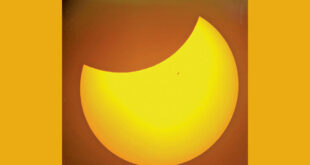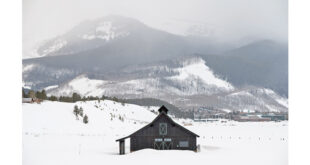I got back to Crested Butte this week to find that summer bloomed in my absence. The aspen trees have sprouted tiny, heart-shaped leaves and the afternoon breezes no longer harbor the harsh breath of winter.
I spent the last 10 days in New Orleans, Louisiana, where summer has had a foothold for many weeks. The entire city was brimming with life. I went to empty a flowerpot left upturned after the previous day’s thunderstorm to find it swimming with bugs that sprang up overnight. In two or three days, mustard greens that my friend had planted in a big pot with two shy neighbor boys were pushing up. Life springs forth in New Orleans.
With growth so abundant, it’s no surprise that New Orleans is healing. This was my second trip to New Orleans since “the storm,” as everyone darkly refers to Hurricane Katrina, and I was anxious to see progress as the city repairs. I wasn’t disappointed. Everywhere we turned, new businesses are taking hold, old businesses are re-opening, and people are returning. Ever present are construction workers, tearing out the insides of old homes and buildings, preparing for owners to take up residence. Most hopeful is the return of musicians who are the city’s lifeblood. My friend lives about one block from the much-publicized Musician’s Village, a joint housing project built by Habitat for Humanity and Operation Home Delivery. The neighborhood is bustling and colorful with new houses lining the streets.
Still much work needs to be done. The neighborhoods surrounding the Musician’s Village are still only partly occupied with abandoned homes standing dark—eerie reminders of the devastation. In some parts of the city, entire neighborhoods are still empty. The city’s former housing projects are lying in heaps, the debris heartbreakingly peppered with former residents’ belongings that they could not retrieve. Many of the city’s street and traffic lights are still not working properly—or at all. The day after we arrived, the Times-Picayune reported that a police officer was killed when he unintentionally drove his car off a drawbridge that was up. The bridge’s safety gate had been broken for 10 years and a safety mechanism designed to prevent the bridge from opening if the gate isn’t down had shorted out.
Among the most disturbing sights was in the lower Ninth Ward, where three levy breaks sent millions of gallons of river water into the neighborhood, destroying both homes and lives. Now much of the debris has been swept away, leaving land that’s waist-deep in grasses, weeds and wildflowers. In those bare neighborhoods, slow progress is being made. Three years after the storm, churches still stand empty, playgrounds are quiet, grocery stores and restaurants sit vacant. New Orleans officials are grappling with the interesting question of what comes first—amenities to attract residents to return, or residents who will encourage shop-owners and others to come back.
To help address these issues, there has been an outpouring of good will toward New Orleans. Everywhere you turn, there are organizations hard at work, helping residents get back on their feet. And while they accept the help, New Orleanians appear remarkably adept at picking themselves up. As writers Malcolm Jones and Cathleen McGuigan wrote so well in Newsweek last month, “In the wake of Katrina, New Orleans is doing what it does best: making something extraordinary out of next to nothing.” I believe that ability, for better and for worse, will see the city through. Life is forging ahead.
—Aleesha Towns
Check Also
More parking thoughts…
No Barbieland sequel from me this week although some of the discussion at Monday’s Crested …
 The Crested Butte News Serving the Gunnison Valley since 1999
The Crested Butte News Serving the Gunnison Valley since 1999





